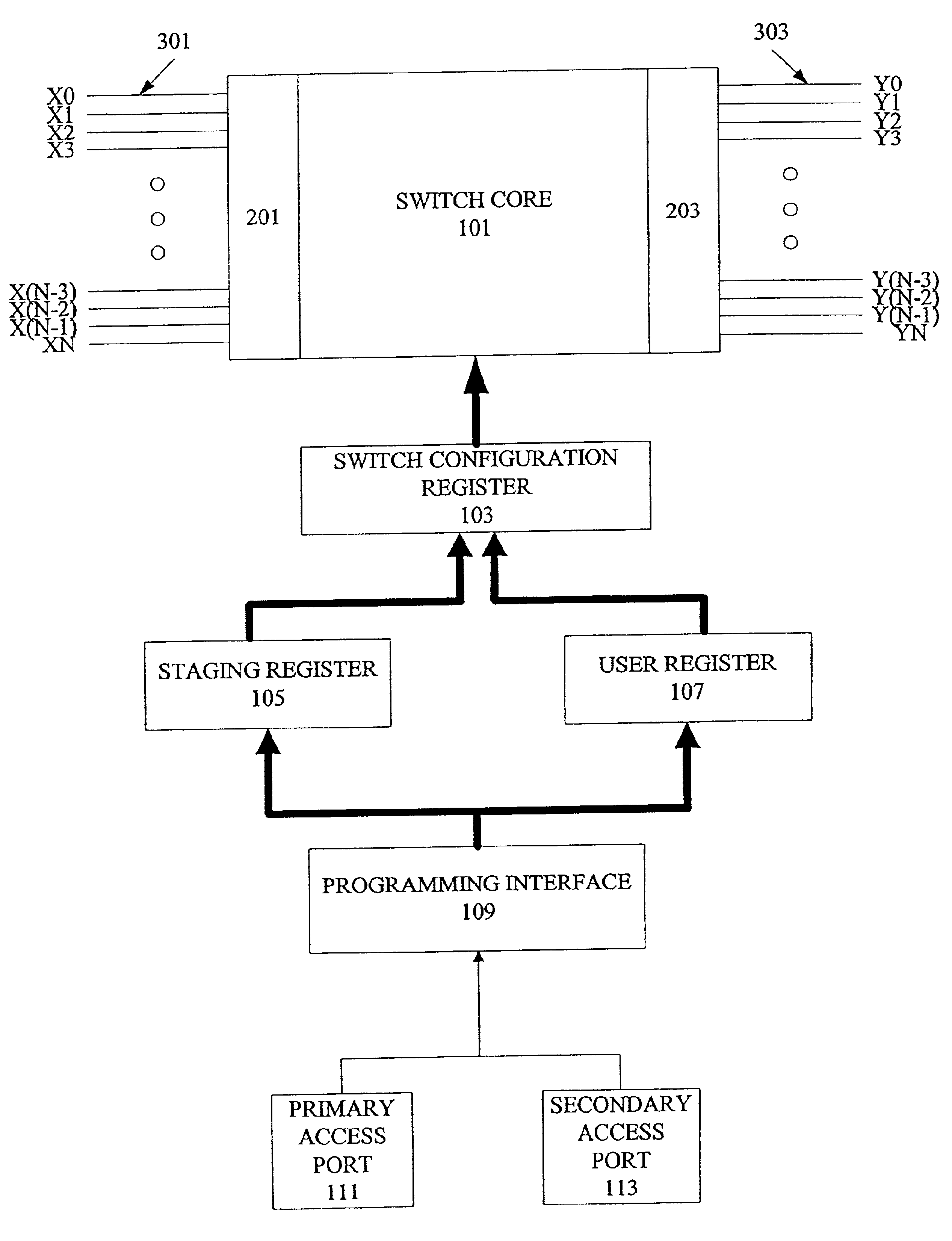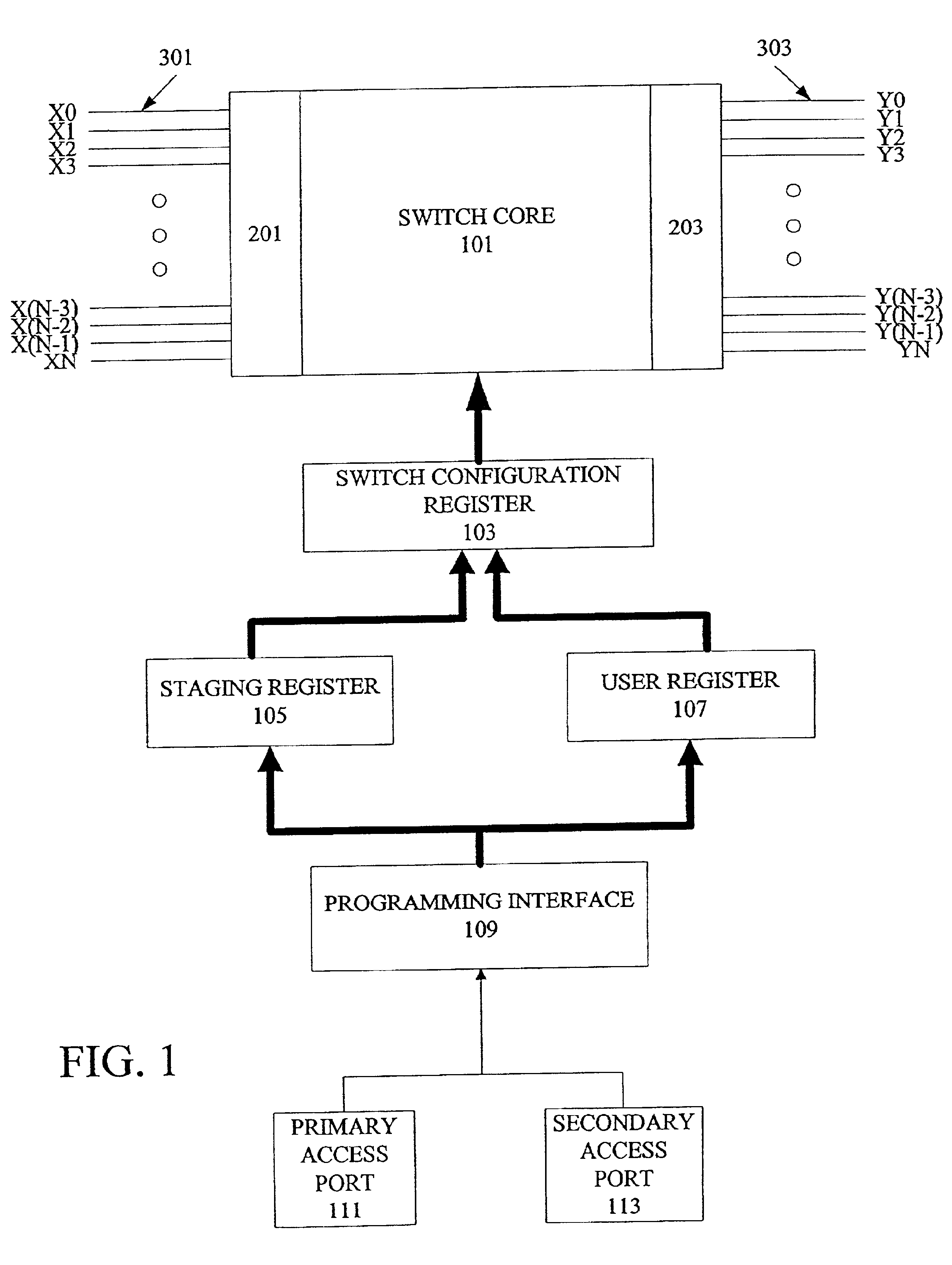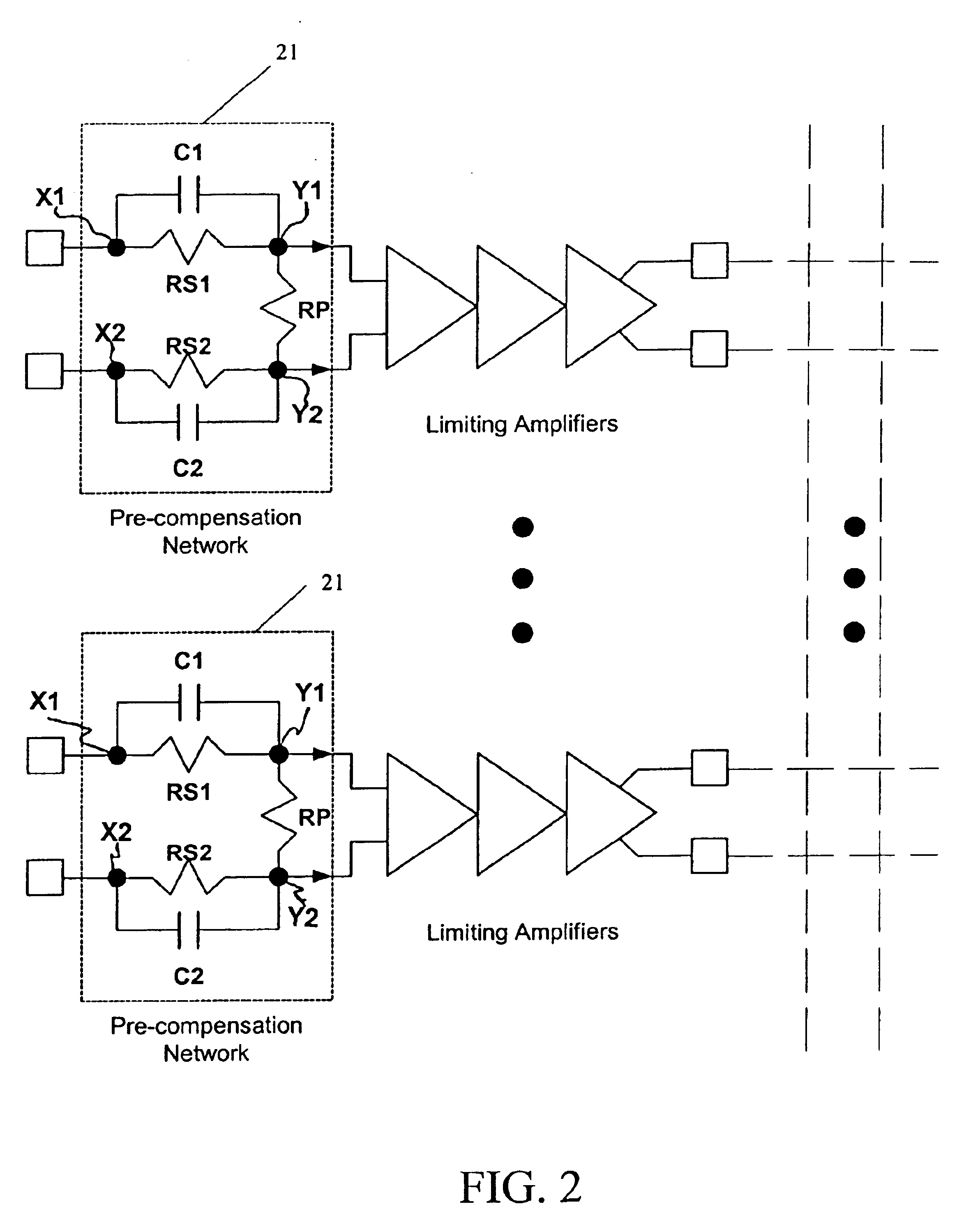Crosspoint switch with switch matrix module
a cross-switch and matrix module technology, applied in the field of integrated circuits, can solve the problems of limiting the number of inputs and outputs available, requiring reconfiguration of between outputs and inputs, increasing die area, heat generation,
- Summary
- Abstract
- Description
- Claims
- Application Information
AI Technical Summary
Benefits of technology
Problems solved by technology
Method used
Image
Examples
Embodiment Construction
[0037]FIG. 1 illustrates a block diagram of one embodiment of a switch of the present invention. The switch includes a switch core 101, a switch configuration register 103, a staging register 105, and a programming interface 109. In somewhat more detail, the switch core couples signals from an input bus 301 to an output bus. The switch configuration register determines which output signals of the output bus are derived from which signals of the input bus. The staging register provides a temporary programming register, the contents of which are transferred to the switch configuration register when remapping of the outputs to the inputs is desired. The staging register is accessed using the programming register. The input bus provides a number of signals each to input signal equalization circuits 201. The input equalization circuits are coupled to the switch core. Similarly, outputs of the switch core are coupled to output level control circuits 203 which are coupled to an output bus ...
PUM
 Login to View More
Login to View More Abstract
Description
Claims
Application Information
 Login to View More
Login to View More - R&D
- Intellectual Property
- Life Sciences
- Materials
- Tech Scout
- Unparalleled Data Quality
- Higher Quality Content
- 60% Fewer Hallucinations
Browse by: Latest US Patents, China's latest patents, Technical Efficacy Thesaurus, Application Domain, Technology Topic, Popular Technical Reports.
© 2025 PatSnap. All rights reserved.Legal|Privacy policy|Modern Slavery Act Transparency Statement|Sitemap|About US| Contact US: help@patsnap.com



